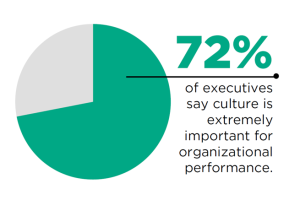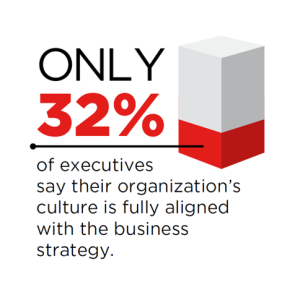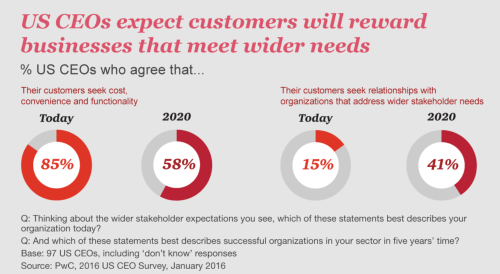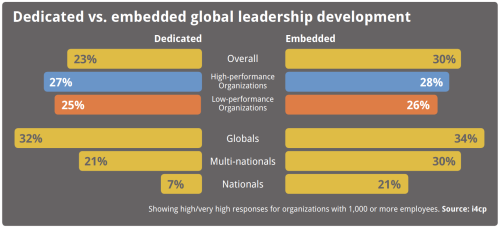
I recently ran across the third report in the Real Work Leadership series of reports from Korn Ferry. Create an Engaging Culture for Greater Impact looks at changing culture through the lens of leadership development. An interesting take.
The report is the analysis of a global survey of views on leadership development fielded in July and August of 2015. With more than 7,500 survey responses from 107 countries, 3 in 4 of the leaders who responded were from their organizations’ business functions; the remainder were from HR. That’s pretty unusual and made the results more interesting. Remember those demographics as you see some of the findings below.
Respondents ranked their top 7 priorities for leadership development within their organizations. Remember, only 25% of the global pool of respondents were in HR.
I was interested to note that only one of the top seven priorities for leadership development is operationally performance driven: #4, Accelerating time to performance. Right in the middle of the pack. #1 and #3 were change related, and #2 was talent acquisition related. I find these surprising from a group overwhelmingly made up of non-HR leaders. But looking at the final three – Driving engagement, Diversifying the leadership pipeline, and Becoming more purpose and values driven – enables me to back off of my surprise. If these were the only choices from which to rank the important leadership development priorities of senior leaders, then the only real surprise is that Accelerating time to performance is not rated the top priority.
The survey analysis goes on to suggest that Developing leaders to drive strategic change really means developing leaders to accelerate culture change. That would be really interesting if true. That would mean that 5,625 very senior business leaders around the world think that changing their culture is their very top priority. That would be outstanding. For someone like me, who thinks that culture is the one of the most critical business sustainability dynamics, this is music to my ears.
The report is mostly about leadership development. That’s a big part of Korn Ferry’s business. So that makes sense. And there are a number of interesting data points that you might want to consider in your business. Things like the following:
But this:
Remember again that the vast majority of respondents in this survey were not HR leaders. But the data ought to give HR leaders all over the world ammunition to begin to link their leadership development strategies to their organization’s business strategies in new and compelling ways. Especially as they relate to culture change. Perhaps this from the report is one of the most simple descriptions of the interconnectedness of culture, leadership, and strategy – and so, performance:
“The starting point for organization alignment is mission, purpose, and strategy. Ideally top leaders define these elements, the path to execution , and the values and behaviors that will support implementation and success. Once they have done so, these individuals must communicate this information clearly, consistently, and repeatedly throughout the organization.”
I liked this survey analysis. We talk about culture all the time. (Well, I talk about culture all the time.) We don’t often talk about culture through the lens of leadership development, though. And as this paper reports, leadership development – particularly as we are in the midst of a demographic sea change of Biblical proportions – may be an integral strategy for moving cultures forward for performance, for talent acquisition, and for business sustainability.









 The
The 





